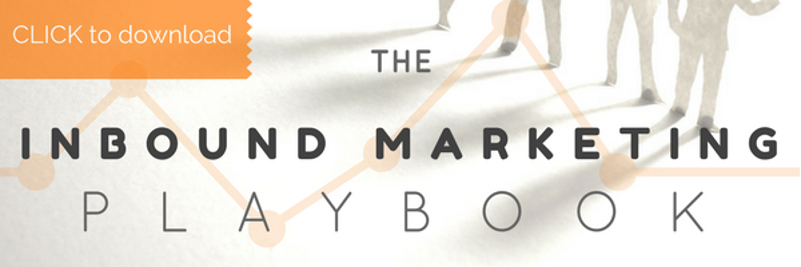
All that glitters is NOT gold:
Sure, the Hubspot toolset is impressive, especially at the Pro level. Emails send themselves, blogs are framed with precision, your website is dynamic, as is all of your forms and the content on your site and within your emails.
But for some reason it's just not working... Why is that?
At some level, I think we all know the answers to our individual challenges.. the reasons why we're not getting the traffic we thought we would, or the lead conversions, or the customers... or all of them. But I have seen both sides of this coin, talked to numerous partners and businesses using the platform, and personally transitioned from a specialty social media marketing agency to a full-suite inbound firm through the Hubspot Academy.
I have some interesting perspective on the subject, and if you're thinking about buying that Pro package, think twice - if you already have it and it's not working, you're in luck - because here are 7 honest reasons why your Hubspot integration & implementation failed (and their solutions):

1. Hubspot is not the winning lottery ticket
There is no doubt a sense of frenzy when signing on that dotted line with Hubspot. Not only have we been sold because of the buyer's journeys we experienced, but there's this feeling that by doing so, we have guaranteed our position in the future as a dominant competitive force thanks to the software platform.
Well, it's just wrong. There is no such thing as a guaranteed victory, and there is a lot more to what's going on with what was used on you than simply having a subscription to the software. Owning the tools does not a skilled carpenter one make.
Hubspot has some incredibly skilled marketers on staff, and they integrate their campaigns with their sales teams really well. If you want to emulate it, you can, and they'll even help you do so, but they won't do it for you.
Tweet2. You don't have enough time
Marketing is a full-time job. Period. Whether you're running an inbound campaign, an outbound strategy, or a hybrid of the two, marketing is not something you can expect to work for you if you aren't working for it. Now, I will admit that by using Hubspot, I have been able to reduce a significant amount of time dedicated to administrative tasks, bouncing between logins and accounts, and analytics. However, I personally just find that it frees me up to run bigger & better marketing campaigns.
I think this is an area that stumps a lot of people though, because the expectations are out of whack going into it. Yes, you'll reduce the amount of time you're spending on each - social media marketing, automation, email nurturing, blogging, and analytics. But chances are that you weren't doing one or more of those functions in the past, or they were seriously under-performing because you weren't putting enough resources into them, which means now that you're doing ALL of them, you may find that they're hard to keep up with while running other aspects of the business.
3. You bought a jet, but didn't hire a jet pilot
I've seen businesses AND agencies make this mistake. If you don't have the resources for hiring a pilot or the bandwidth to boot-strap it yourself, you're probably going to get really frustrated at the outcome.
When you DO decide to venture out and find a qualified pilot to run your program, make sure they have their inbound marketing certification. Being Hubspot certified is important too, but inbound THROUGH Hubspot is the industry standard, and if you want your program to run the way it's supposed to, this should be a bare minimum requirement.
Tweet4. Your goals were out of whack
If your main goal is to get more website traffic, this may not be the right path for you. A solid inbound marketing campaign CAN help you achieve that, but the focus is more about quality rather than quantity. The fourth month into our campaign yielded the fewest amount of visitors since launch. But there are two really big reasons why it was still our best month ever: 1) We stopped running paid ads campaigns. 2) We were still converting visitors into leads, and they were the best we've ever had.
Month five was even better.
5. The training IS important after all
Yes, learning to fly a jet is hard work. If you're going to do it, then be prepared to not be the smartest person in the room, and do your best to learn as much as you can, as fast as you can. Don't think for one second that this is going to be a cake-walk. Hubspot is not a magical genie in a lamp waiting to grant you three wishes. It is a marketing tool.
The good news is that if you are up to the task of learning it, then you will do really well with the training they provide, because it is awesome. I've said this many times, how the inbound marketing certification and hubspot certification processes combined are like going through a mini master's program. You even have to pass a rigorous practicum.
6. You're not 100% committed
There was a particular agency I spoke with that crystalized this notion when four months after converting to Hubspot they still had yet to roll out their first campaign.
By our fourth month, we had rolled out over 17 campaigns, were blogging twice a week, and were generating quality leads quite regularly. Yes, it's aggressive, but so are my plans for the agency. If you're on month 4 or 6 and still don't have your first campaign rolling, maybe it's a commitment issue.
MORE LIKE THIS: A Sales Guy's Review of the Hubspot CRM
7. You're biting off more than you can reasonably chew
Learning to take smaller bites was a hard lesson for me to learn, but it's exactly what changed between months 4 and 5. I took all of the intel I had learned from the previous 4 months (what's getting clicks, downloads, bounces, and unsubscribes), and used it to narrow my focus from inbound marketing for ALL businesses to just a handful of the ones I knew best.
Not only do you make efficiencies more challenging by going after too much at once, but you also don't give your target audiences what they're looking for - a custom experience... something that proves to them that they are in good hands with you, and that they should work with you above all else.

Don't forget the talent:
Inbound marketing is awesome because it works for you 24/7/365, and it delivers the best leads you'll ever have. They're easier to convert, they're cheaper (even with that hefty Hubspot Pro price tag), and they create awesome, custom experiences for your visitors. But there's still an investment required, outside of the tools, to make it work: talent - pure and simple.
If it's not working, it may not be the software's fault. You might just need to put a little more elbow grease into it than originally thought. The good news is that when you do finally get it on track, it should pay for itself and then some (the analytics will prove it). I think by using a platform like Hubspot, you're able to do the work of 2 people with just 1, but you still need the 1... or the 2 for the output factor of 4. The more you put into it, the more it puts into you.
TweetLooking for assistance in piloting your Hubspot software? Schedule a free consultation today!
Perhaps you're just getting started and want to kick the tires first. Try this ebook on inbound marketing for YOUR business!


